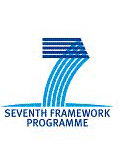Inspection of Passengers Using a fast Millimetre Wave FMCW Radar
| Author(s) | Hantscher Sebastian(*), Lang Stefan(*), Hägelen Manfred(*), Essen Helmut(*), Tessmann Alex(**) |
| Organization(s) | *Fraunhofer FHR (Germany) **Fraunhofer FHR (Germany) |
| Conference | 29th Progress In Electromagnetics Research Symposium (PIERS 2011) |
| Conference Date | 20 - 23 March 2011 |
| Conference Location | Marrakesh (Morocco) |
|
Abstract The event on September 11th in 2001 showed that airports are a potent target for terrorist acts. Up to now, by using the common walk-through metal detectors only enabling the detection of metal, are not suitable for guaranteeing a sufficient high security level. That is why in recent years a lot of new technologies have been developed and now are tested for the practical application on airports. However, a lot of concerns and doubts raised to the new high-tec devices, i.e., concerning the protection of the privacy, possible health hazards and the effectiveness in ratio to the increased costs. A further challenge for new technologies is the handling with steadily growing passenger flows and thus the involved effort of security checks. This leads to completely new approaches in the aviation security. A first step is the EU funded project ATOM combining different technologies and sensors in a sophisticated way to show the feasibility how a reliable but also - from the viewpoint of the passenger - satisfying security check could look like. One of the used sensor type is a millimeter wave radar based scanner giving an indication where suspicious items are located on the body. This preselection which is carried out covert by a very fast scan is an important information for the security staff or further scanners needing just to inspect the selected body areas. During the design process of the millimeter wave radar operating at 94 GHz in the W band, the focus was not only on technical parameters but also on compliance with ethical aspects as well as a minimum influence of the natural passenger flow. The radar is based on a rotating sensor platform enabling a 360 degree scan in just few seconds. The RF front end consists of a monolithic microwave integrated circuit FMCW radar including a varactor tuned VCO, very compact transmit and receive amplifiers and a mixer. To enable bidirectional operation of a single transmit-receive antenna a combination of a Wilkinson divider and a Lange coupler was integrated. The circuit features coplanar technology and cascode HEMTs for compact size and low cost. These techniques result in a particularly small overall chip size of only 2 x 3mm2. For obtaining a suffcient resolution, the principle of the synthetic aperture is applied to simulate a narrow beam antenna by moving a broad beam antenna around the person. Experimental measurements on real persons show that metallic as well as non-metallic forbidden items (such as ceramic knives) could be detected under the clothes of the test persons. |
|
Document Actions


